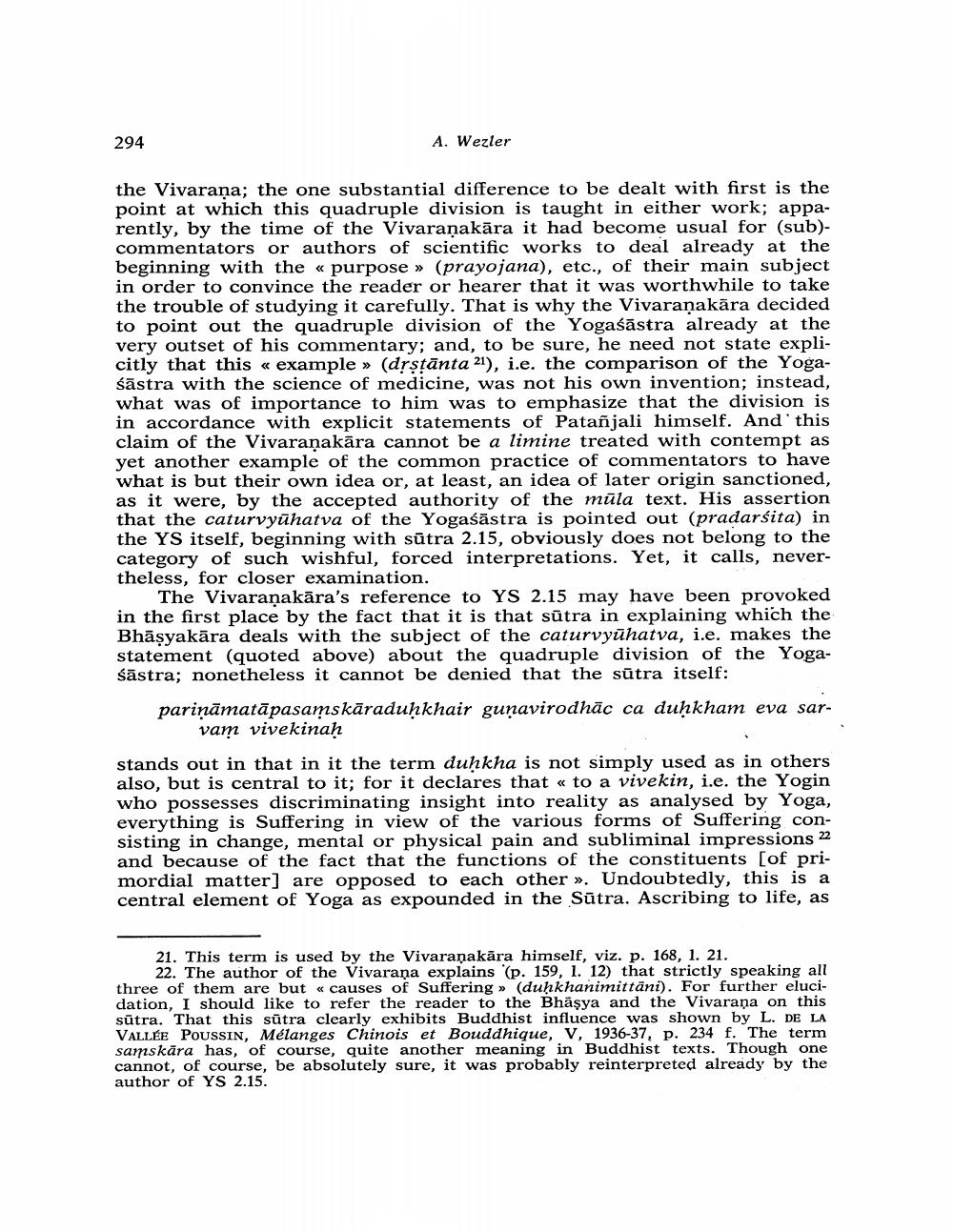Book Title: On Quadruple Division Of Yogasastra Author(s): A Wezler Publisher: A Wezler View full book textPage 6
________________ 294 A. Wezler the Vivarana; the one substantial difference to be dealt with first is the point at which this quadruple division is taught in either work; apparently, by the time of the Vivaranakära it had become usual for (sub)commentators or authors of scientific works to deal already at the beginning with the « purpose » (prayojana), etc., of their main subject in order to convince the reader or hearer that it was worthwhile to take the trouble of studying it carefully. That is why the Vivaraṇakāra decided to point out the quadruple division of the Yogaśästra already at the very outset of his commentary; and, to be sure, he need not state explicitly that this « example (dṛṣṭanta 2), i.e. the comparison of the Yogaśāstra with the science of medicine, was not his own invention; instead, what was of importance to him was to emphasize that the division is in accordance with explicit statements of Patanjali himself. And this claim of the Vivaraṇakāra cannot be a limine treated with contempt as yet another example of the common practice of commentators to have what is but their own idea or, at least, an idea of later origin sanctioned, as it were, by the accepted authority of the mula text. His assertion that the caturvyuhatva of the Yogaśastra is pointed out (pradarśita) in the YS itself, beginning with sūtra 2.15, obviously does not belong to the category of such wishful, forced interpretations. Yet, it calls, nevertheless, for closer examination. The Vivaraṇakāra's reference to YS 2.15 may have been provoked in the first place by the fact that it is that sutra in explaining which the Bhāṣyakāra deals with the subject of the caturvyuhatva, i.e. makes the statement (quoted above) about the quadruple division of the Yogaśāstra; nonetheless it cannot be denied that the sutra itself: pariņāmatāpasamskāraduḥkhair gunavirodhac ca duḥkham eva sar vam vivekinaḥ stands out in that in it the term duḥkha is not simply used as in others also, but is central to it; for it declares that << to a vivekin, i.e. the Yogin who possesses discriminating insight into reality as analysed by Yoga, everything is Suffering in view of the various forms of Suffering consisting in change, mental or physical pain and subliminal impressions 22 and because of the fact that the functions of the constituents [of primordial matter] are opposed to each other ». Undoubtedly, this is a central element of Yoga as expounded in the Sūtra. Ascribing to life, as 21. This term is used by the Vivaraṇakāra himself, viz. p. 168, 1. 21. 22. The author of the Vivarana explains (p. 159, 1. 12) that strictly speaking all three of them are but « causes of Suffering » (duḥkhanimittäni). For further elucidation, I should like to refer the reader to the Bhasya and the Vivarana on this sutra. That this sutra clearly exhibits Buddhist influence was shown by L. DE LA VALLÉE POUSSIN, Mélanges Chinois et Bouddhique, V, 1936-37, p. 234 f. The term samskära has, of course, quite another meaning in Buddhist texts. Though one cannot, of course, be absolutely sure, it was probably reinterpreted already by the author of YS 2.15.Page Navigation
1 ... 4 5 6 7 8 9 10 11 12 13 14 15 16 17 18 19 20 21 22 23 24 25 26 27 28 29 30 31 32 33 34 35 36 37 38 39 40 41 42 43 44 45 46 47 48 49
